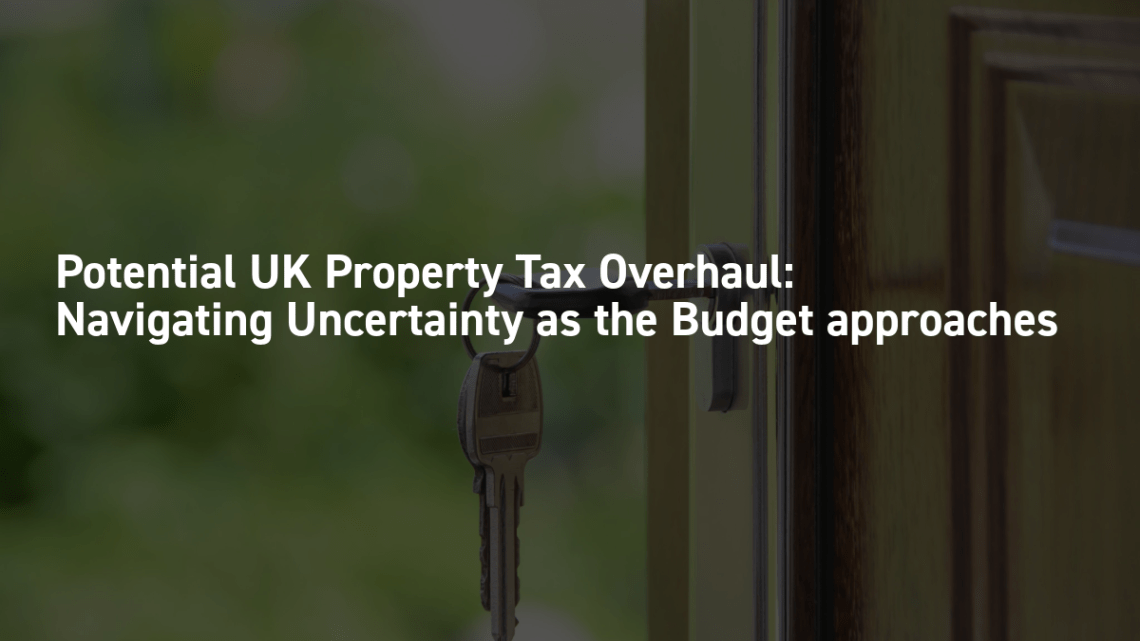
In the run-up to the Autumn Budget on the 26 November, there has been speculation about several tax reforms that could reshape Britain’s residential property landscape. As Chancellor Rachel Reeves prepares the Budget while addressing a £40bn, uncertainty is mounting over how these proposals might affect property transactions nationwide. In this article, HW Fisher experts outline the speculated changes to Stamp Duty Land Tax (SDLT) and Capital Gains Tax (CGT) on high-value main residences, detailing the potential market and financial impact on investors and homeowners.
Key Reforms Under Review
The Treasury is reportedly examining a comprehensive package of changes. SDLT reform could see the current system abolished for properties above £500,000 and replaced instead with a seller-paid tax upon disposal. An annual property levy on higher-value homes may accompany long-overdue council tax modernisation, updating the system that still relies on 1990s valuations.
Additionally, a proposed adjustment to Capital Gains Tax (CGT) could apply to private residences exceeding £1.5m, removing the current exemptions that protect main homes from such charges.
Capital Gains changes to High-value properties
The potential change to CGT represents a significant shift in UK property law. The proposed changes could impose an 18% levy on basic-rate taxpayers and 24% on higher-rate taxpayers for gains above the £1.5 million threshold.
A homeowner who purchased their property decades ago for £300,000 and sells today for £1.8 million could face substantial tax liability on £300,000 of profit exceeding the proposed limit, potentially affecting around 120,000 higher-rate taxpayers nationwide.
Current Market Confusion
Without official government confirmation or detailed proposals, leaked information has created significant market confusion, leaving buyers and sellers uncertain about their next moves. Properties above £500,000 may see sellers rushing to complete transactions before potential changes take effect, while buyers in this bracket might delay purchases hoping to benefit from stamp duty abolition.
Similarly, those considering properties over £1.5 million face a dilemma, having to decide whether to proceed now to avoid potential future capital gains exposure or wait for clarity on the implementation details. Recent market feedback indicates that some buyers are hesitant to proceed with purchases, likely reflecting the uncertainty from recent speculation, which may further slow an already subdued market for sellers.
Regional and Social Implications
London could be disproportionately affected, with average property values of £550,000 compared to the national average of £272,664. The capital’s already challenging affordability may continue to influence the decisions of young professionals, and further tax changes could add to these pressures.
These reforms risk exacerbating Britain’s downsizing problem, where over 40% of homeowners aged 65-plus occupy oversized properties. Extra selling taxes could discourage older residents from moving to smaller homes, restricting family housing supply and creating market bottlenecks.
Looking Ahead
As Westminster speculation continues, the property market waits for clarity on reforms that could reshape homeownership patterns for generations.
Navigating potential property tax changes requires careful planning and strategic decision-making, particularly for those with higher-value properties or complex ownership structures. From understanding capital gains tax implications to exploring timing strategies for transactions, it is essential to assess how proposed reforms might affect your specific circumstances.
Our tax specialists are monitoring developments closely and can provide tailored advice to help protect your position in this uncertain environment.
We’d love to hear from you. To book an appointment or to find out more about our services: